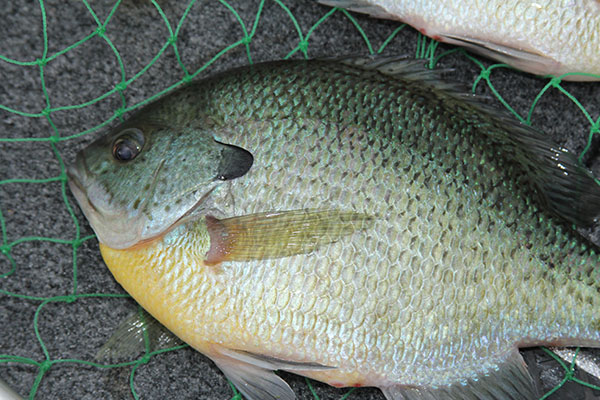By Louie Stout
 Mild Winter May Deliver Good Summer Fishing
Mild Winter May Deliver Good Summer Fishing
Most anglers know that the weather plays a huge role in fish activity and angler success. Cold fronts can shut down a hot bite while an imminent thunderstorm can turn it on.
But what about our mild and goofy winter? Could it affect fishing this spring and summer?
Indiana fisheries biologist Jed Pearson thinks there’s a good chance it could yield a good spring and summer fishing season.
Pearson is a fish researcher who has been studying winters’ impacts on northern Indiana lakes.
“When we look at what’s happened on a handful of lakes we’ve studied, we’ve found that more and better habitat is present when overall winter and spring conditions are warmer and drier than during those seasons that follow colder, wetter years,” he explained.
When he speaks of habitat, he’s talking about water temperature and oxygen levels that affect the space in which fish can live comfortably.
As lakes warm, they stratify into three layers, a warm-water top layer, a cooler mid-layer known as the thermocline, and a bottom cold-water layer, that has colder water, it has less oxygen.
The mid layer offers the cooler temps and the oxygen that coldwater species (walleye, perch, muskie and northern pike) prefer.
Based on his nine-year summer study of habitat conditions at Crooked Lake, north of Columbia City, the depth where fish can live varies as much as 30 percent from year to year.
In an average year, suitable habitat extends from the surface down to 24 feet. Below 24 feet oxygen levels drop too low for fish to breathe.
During 2012, a warm and dry year, suitable conditions were present down to 28 feet. In contrast, fish were confined to the top 21 feet of water in 2014, a cool, wet year.
The mid layer at Crooked Lake was thickest in 2010, 2012 and 2016 but virtually disappeared in 2014.
Pearson also found similar variations in two other lakes, Adams Lake in LaGrange County and Waubee Lake in Kosciusko County.
“After a hard winter and cold spring, fish are forced into a smaller area of warmer, less oxygenated water,” Pearson explained. “They tend to be more stressed and less active.”
Warmwater fish like bass, crappies and bluegill can benefit as well. Although they don’t demand the cooler water, they won’t be competing with as many fish in the upper layer and may be found in deeper water than normal.
Warmer winters also can extend periods of light penetration that can stimulate deeper growing plant life, giving fish more places to set up and ambush forage in that comfort zone.
Also during mild winters, fish feed more often and are less stressed going into the spawning season. There’s more food, too, as the lower end of the aquatic food chain springs to life earlier.
“The natural production of a lake’s microscopic animals kicks in sooner and could lead to bigger, fatter bluegills,” said Pearson.
Of course, there is a wild card in his prediction. If we have a colder-than-normal and wet spring, all those gains could be meaningless.
Cold, wet springs slow a lake’s warm-up that impacts production of the tiny plankton that fish eat and their overall health suffers.
But you gotta think positive.
“If unseasonably warm weather conditions continue, and barring heavy rains, 2017 could be a very good year for anglers,” Pearson said.